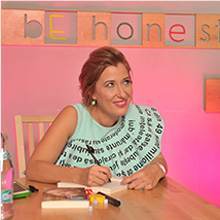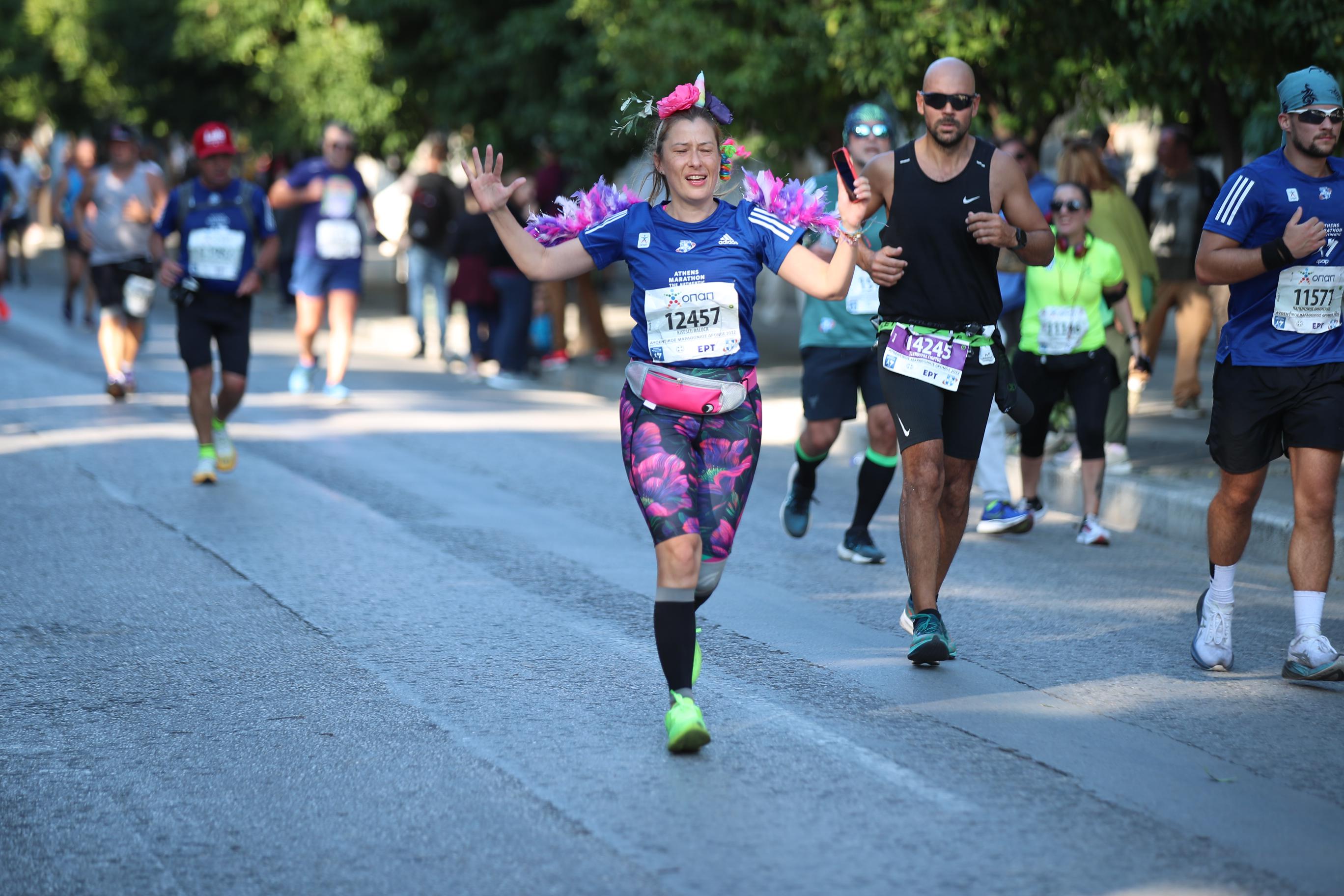Understanding the teenage brain to parent, target and train


You may be having adolescents at home or in your classes/on your screens or working for brands which are targeting this segment. By the way, whoever is aged 11 to 14 is called a tween, while whoever is aged 15 to 20 is a teen. If you have an 18 year old, it does not mean he/she is an adult already, as the age is still ending in teen (thank you my goddaughter for opening my eyes).
Or you may be looking confident that it is still a long way till you get there with your children (and ideally you will be better prepared by that time), but trust me, as a mother and teaching professional of special business clases for youngsters who wish to know more about communication, branding and leadership, it takes you totally by surprise. It is like gaining weight suddenly: at least 5 kilograms!
Scientists believed for years that the adolescent brain was essentially an adult one - only with fewer miles on it. Over the last decade the scientific community has learned that teenage encompass vitally important stages of brain development. Motivated by her personal experience of being a single mother to teenager boys, Frances E. Jensen, M.D*. (together with Amy Ellis Nutt), gathered in her book The Teenager Brain: A Neuroscientist’s Survival Guide to Raising Adolescents and Young Adults recent discoveries about adolescent brain functioning, wiring and capacity and explained how they dismiss previous myths about the teenage years but also yield practical suggestions related to learning and multi-tasking, stress and memory, sleep, addiction and making decision.
On my personal and professional journey of parenting and teaching business to adolescents, I found this book as useful as it could be, distingushing between popular knowledge and science. What if I start by telling you that there is solid data to show that IQ can change during your teen years, more than anyone have ever expected? That between 13 and 17 years of age one-third of people stay the same, one-third of people decrease their IQ and a remarkable one-third of people actually significantly raise their IQ? Will you be even more interested to read?
1. What does it mean to be a TEEN?
Your son or daughter has sudenly become unfamiliar, unpredictable and bent on being different.
Granville Stanley Hall, the American psychologist (the first American to earn a PhD in psychology, the first president of the American Psychological Association and the founder of the child study movement) wrote in 1904 about the exuberance of adolescence: These years are the best decade of life. But also the worst. He said it is the “birthday of the imagination”. In his 1904 book of more than 1400 pages - Adolescence: Its Psychology and Its relations to Physiology, Anthropology, Sociology, Sex, Crime, Religion and Education - he pointed to the fact that this was a distinct and separate stage qualitatively different from either childhood or adulthood. (wild exuberance, self-feeling, ambition, exaggeration, excess).
- The way that the adolescent brain responds to the world has a lot to do with the impulsive, irrational and wrongheaded decisions teens seem to make so frequently. Learning is cumulative - everything new is based on something you just learned. Scientists have shown that the best way to remember what you have learned is to return to the place where you learned it. Where and how teenagers learn is important.
- It is also important to let them experience with more harmless things( blue hair dye by example) rather than have them rebel and get into much more serious trouble. Try not to focus on winning the battles when you should be winning the war.
- Kids all have something they’re struggling with that you can try to help.They are just as puzzled by their unpredicatble behavior and they are at a point where they will not tell you about it. Pride and image are big for teens, and they are not able to look into themselves and be self-critical.
In your mind, go through what you want to say, step by step, and imagine the range of responses. If you appear hotheaded or mentally disorganized, you loose credibility, whether it’s with a colleague, an employee or a teenager.
Changing the behaviour of your teen is partly up to you, so you have to come up with a plan of action and a style of action that fits your household and your kids, as well as your needs and wants.
But the most important advice dr Jensen gives us is to stay involved. Our best tool as parents is our ability to advise and explain, as well as to be good role models.
2. How are the TEEN YEARS?
The word “teenager”, as a way of describing this distinct stage between the ages of thirteen and 19, first appeared in print, and only, in passing, in a magazine article in April 1941. They look different from adults, dress differently, have different interests, even a different vocabulary.
The teenager brain is “seeing” the hormones for the first time, this is why the brain hasn’t yet figured out how to adjust the body’s response to this new influx of chemicals. Because both hormones (estrogen and progesteron) are linked to chemicals in the brain that control mood, a happy 14 y.o. girl can have an emotional meltdown in the time it takes her to close her bedroom door. With boys, testosterone finds friendly receptor in the amygdala, the structure in the brain that controls the fight-or-flight response that is aggression or fear. Before leaving adolescence behind, a boy can have 30 times as much testosterone in his body as he had before puberty began. Sex hormones are particularly active in the limbic system, which is the emotional center of the brain. Therefore, adolescents are not only emotionally volatile but may seek out emotionally charged experiences. Adolescence is a time of increased response to stress.
Teens are much more likely to exhibit stress-induced illnesses and physical problems, such as colds, headaches, and upset stomachs.
3. How does the BRAIN BUILD during ADOLESCENCE?
Children and teens can “imprint” on experiences they have and these can influence what they choose to do as adults. Neurologists and neuroscientists tend to love to look for patterns in things and this is how they discovered that among all the organs of the human body, the brain is the most incomplete structure at birth, just about 40% the size it will be in adulthood. Not only the size changes, but all the internal wiring changes during development.
- A teenager brain has an overabundance of gray matter (the neurons that form the basic building blocks of the brain) and an undersupply of white matter (the connecive wiring that helps information flow efficiently from one part of the brain to another) - which is why the teenager brain is almost like a brand new Ferrari: it’s primed and pumped, but it hasn’t been road tested yet. It is all revved up but does not know eactly where to go.
- At approximately 1.4 kg, this wet, wrinkled tissue is about the size of two fists held next to each other and weighs no more thnan a large acorn squash. Size and weight do not mean anything. A whale brain weighs about twenty-two pounds, an elephant brain about eleven. If intellect were determined by the ratio of brain weight to body weight, we’ll be loosers. We actually have less brain per gram of body weight than some of our primate cousins. It is the complexity of the way neurons are hooked up to one another that matters. Einstein’s brain was around 1,23 kg, which is slightly underweight. But his brain’s connections per gram of brain matter were bigger than the average person’s.
- Based on the same assumption, human female brain is physically smaller in size than the male brain, but IQ ranges are the same for the two sexes!
- The right side of your brain controls the left side of your body and vice versa. The homunculus (Latin for “little man”) is a “map” of the brain illustrating the regions that control the different body parts. The amount of brain area devoted to a given body part varies depending on how complicated its function is.
- As of late 1970s the term that started to be used was “plasticity”, meaning that the brain could be changed by experience - it was moldable, like plastic. In fact, we reallocate brain space based on experience during life (“nurture” modifying “nature”).
The brain is divided into specialized regions for each of the sense. The frontal lobes, which make more than 40% of the human brain’s total volume (more than in any other animal species) are the seat for our ability to generate insight, judgement, abstraction, and planning. Our competitve edge as humans is our ingenuity, brains over physical power. This edge happens to take the longest to develop, as the connectivity to and from the frontal lobes is the most complex and is the last to fully mature. The connectivity of the brain slowly moves from the back of the brain to the front. In fact, the teen brain is only about 80% of the way to its maturity, and the remaining 20% has a thinner wiring, explaining why teenagers behave in such puzzling ways - their mood swings, impulsivenss; their inability to focus and follow through; their tempation to use drugs and alcohol and other risky stuff. Their frontal lobes are to blame!
When you or they hear about tragic stories involving teenagers, you as a parent should stuff their minds with them and their tragic consequences not once, but again and again even if they complain that you have told them before. Their frontal lobe (its executive function called prospective memory) is not fully wired, so they need to be repeated! Between the ages of 10 and 14 studies reveal that prospective memory is stagnant, meaning the ability to remember to do something important is as of a child between 6 and 10.
- Because there is a limited number of things that a brain can perform simultaneously, texting and driving is not good combination (the brain must constantly switch back and forth between the tasks). This is valid with checking your phone or watching TV while doing tasks, including homework.
Scientists at the Swedish medical university Karolinska Institutet measured these abilities using fMRI images and they proved that focusing on more than one complex task is virtually impossible.
- Multitasking is not only a myth, but a dangerous one, especially when it comes to the teenage brain. It affects both encoding (memorizing) and retrieving (recalling).
When doing homework, do not let them have their headphones on, messenger or other social media apps on and sending notifications. If they try to convince you it is possible, show them the Missouri data/experiment - students performed poorly when multitasking during recall and even worse when they multitasked while memorizing.
- Amygdala, another key brain structure is involved in sexual and emotional behavior and is very susceptible to hormones. A slightly unbridled and overexuberant immature amygdala is responsbile for adolescent explosiveness.
Combine hte immature amygdala with the loosely connected frontal lobes and you have a recipe for potential disaster!
4. How does the TEENAGE BRAIN look under the MICROSCOPE?
There are more than two hundred different types of cells making up every organ. tissue, muscle. A unique cell type in the brain is the neuron. If you are learning something right now, as you read this, your neurons will change in about 15 minutes, creating more synapses (the point of contact between two neurons) and receptors. Synapses come in two forms: one that excites and one that inhibits.There are 100 billion neurons in the human brain. If you placed them end to end, they will circle the globe 4 times.
- Our brains are the densest before the birth, between the third and sixth months of gestation. A neuron can have up to ten thousand synapses and can send a thousand electrical impulses every second. A baby’s brain creates an astonishing two million synapses every second. The gray matter - the brain tissue responsbile for processing information - continues to thicken throughout childhood as the brain’s cells form extra connections.
- A teen has a heightened capacity to learn new things quickly. In the same time, several studies revealed that it takes longer for adolescents to figure out when NOT to do something (compared to children).
The more complex areas of the brain, especially the frontal lobes, take much longer to develop and are not finished until a person is well into his or her 20s.
- Excitation is a key element of learning and childhood is considered to be a critical period for this when learning and memory are more rubust than later in life. The risk of abundant excitation is overexcitation. Gray matter peaks in girls at age 11 and in boys at age 14 and waxes and wanes during adolescence. Myelin - the “greasing” of the wiring of the white matter - goes up in adolescence and past it, even in a person’s 30s, making the communication between brain areas ever more efficient.
- However, adolescents whose brains are still wired sometimes find themselves in dangerous situations, not knowing what they should do next.
A 2010 British Red Cross study showed that more than 10% of all children and young teens between the ages of 11 and 16 have had to cope at one time or another with a friend who was sick, injured, or uncounscious owing to excessive alcohol consumption. 9 out of 10 adolescents have had to deal with some kind of crisis involving another person during their teenage years and almost half of them admitted to panicking and did’t know how to respond. The teenagers’ amygdalae had signaled danger but their frontal lobes didn’t respond! Teenagers exhibit a stunning lack of insight when found in crisis situations. What scientist tell us is that insight depends on the ability to look outside oneself and because that skill arises in the frontal and prefrontal lobes, it takes time to develop.
5. How do TEENAGERS LEARN?
What did I do wrong? is most frequent question of parents of teenagers after How could he/she do something like that?
Parents quickly blame themselves for a teen’s por behaviour. But…
Teenagers are different because of their brains and specifically because of two unusual aspects of their brains at this stage of their development.
- Their brains are both more powerful and more vulnerable than at virtually any other time in their lives. This is true because of something called neural plasticity.
Our brains are self-built. They not only serve the particular needs and functions of the particular individual, but also are shaped by the individual’s particular experiences. In neuroscience this is called plasticity. Charles Sherrington, a British physiologist and Nobel prize winner said that the human brains “was always in a state of flux”. At any age the brain can be remodeled (but for adult brains only in specific behavioral contexts).
Patricia McKinley of McGill University was able to show that learning the tango, which involves both complex movement and a fine sense of balance, improved the ability of senior citizens, ages 68 to 91, to switch between two different tasks. Plasticity is just another word for learning.
- The brain is programmed to pay special attention to the acquisition of novel information, which is what learning is. The more activity or excitation between a specific set of neurons, the stronger the synapse. Brain growth is a result of activity! The more a piece of information is repeated and relearned, the stronger the neurons become and the connections more familiar!
In fact, while you are reading this right now, you are building new synapses as you read. Only minutes after you learn a new thing, your synapses grow bigger. In a few hours they are virtually cemented into a stronger form.
ATTENTION!
- There is a gray matter decline process in adolescence but different than the one happening after the age of sixty. In later life the loss is the result of a degenerative process, while in teen years is a product of brain plasticity. “Use it or loose it” (your brain, dooh).
- Memories are easier to make and last longer when acquired in teen years compared to adult years. This is a time to identify strenghts and invest in emerging talents! It’s also the time when you can get th best results from remediation, special help, for learning and emotional issues.
- There is solid data to show that IQ can change during your teen years, more than anyone have ever expected. Between 13 and 17 years of age one-third of people stay the same, one-third of people decrease their IQ and a remarkable one-third of people actually significantly raise their IQ.
Children with high IQs may have an extended learning period during which they are able to maintain a rapid pace of new knowledge acqusition.
- Teenagers are fascinated by neuroscience - because it explains the inexplicable unheavals in their lives. They also know they have the capacity to modify and the responsibility for modifying their own behaviour.This is what you must remind them and remind them again! The adolescents have less ability to process negative information than adults do, and so they are less inclined NOT to do something risky, and less likely to learn from the mistakes or misadventures than adults are.
CALL-OUTS!
Teens need to become aware that this is one of the golden ages for their brains!
While learning is at peak efficiency, attention, self-discipline, task completion and emotions are inefficent. “One thing at a time” should be repeated to them all the time.
a. as parents or teachers, do not overwhelm them with instructions! Ideally write them down and limit them to one, max two. Help them manage their time by helping them do daily and weekly calendars.
b. set limits with everything, because their overexuberant brains can not do for themselves. Be clear how long they are allowed to spend on screens (no matter whether it is playing or texting). Best case scenario - limit the digital socializing to just one to two hours a day. And if the teenagers fail to comply, take away the phone, tablet, psp. Insist in knowing the user’s name and password for all of your teenager’s accounts.
c. control and adjust, cause there will be ups and downs. The more you are on top of it, the fewer the tempations for them and the more their brains will learn how to do without the constant distractions. Help them grow with fewer distractions.
d. count to ten before responding to an unexpected emotional outburst from your teenager
The good news about brain plasticity is thay it may peak in childhood and adolescence but it never stops. The more you learn, the easier is to t learn the next thing!
*Frances Jensen is Professor and Chair of the Department of Neurology at the Perelman School of Medicine, University of Pennsylvania. Dr. Jensen has researched brain development from the neonatal period through adulthood. She was Professor of Neurology at Harvard Medical School. So she is not another mother who just sells her tips of raising teenagers, but she is backed by scientific research and solid neuroscience and medical background.















